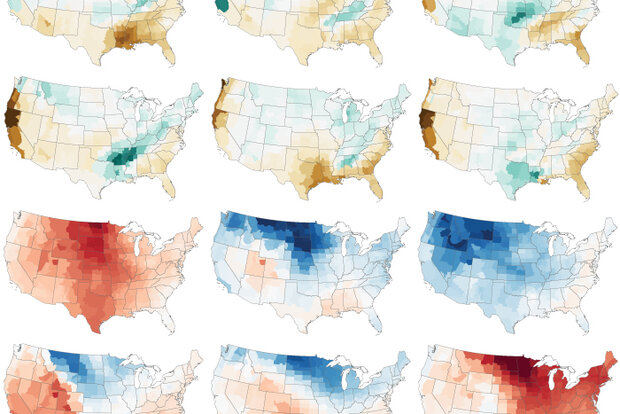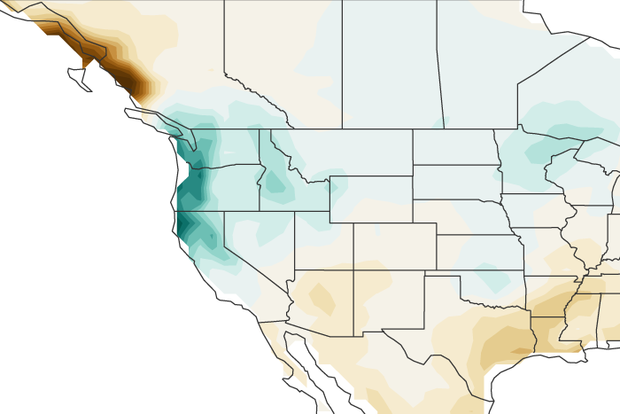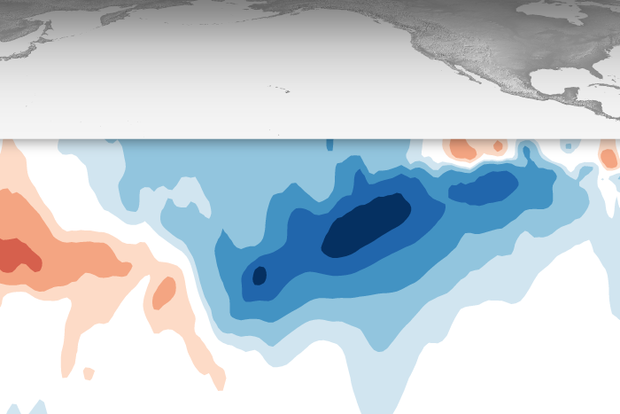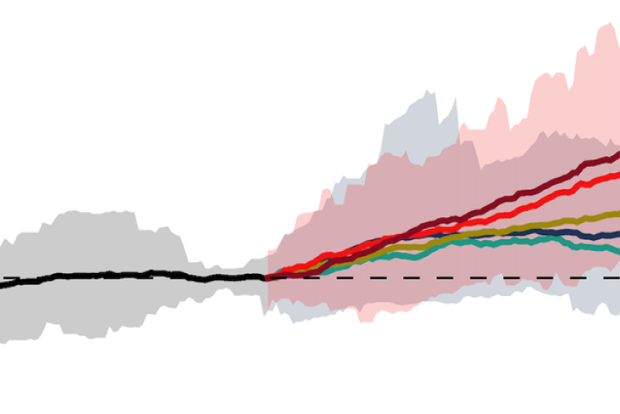Blogs
Mike Halpert has guest blogged for us each fall, and because this is his last guest blog before retirement in later 2022, we want to briefly highlight his contributions. He has worked at NOAA Climate Prediction Center for 41 years and has served as Deputy Director for the last 15 years. He has patiently answered oodles and oodles of questions about climate outlooks, starred in many of Climate.gov's video outlooks, served on the Climate.gov science advisory panel, and acted as a moderator moderator on the blog since inception in 2014. Mike is famous to us because he played a critical role in discovering and documenting climate impacts associated with El Niño and La Niña in a set of very highl…
Read article
La Niña conditions reign in the tropical Pacific, with about a 90% chance of remaining through the winter. Get your popcorn and settle down on the couch—it’s time for this month’s ENSO cinema.
Romantic comedy
A recurring theme here at the ENSO Blog is the on-again, off-again relationship between the tropical Pacific Ocean and atmosphere. ENSO (short for El Niño-Southern Oscillation, the entire El Niño–La Niña system) relies on the interaction between the ocean and the atmosphere. Average conditions in the tropical Pacific (see the drawing below) consist of relatively warmer surface water in the west and relatively cooler surface in the east. Air rises over the warm western water, formi…
Read article
When the climate doesn’t behave like we expect, whether it’s for an individual season or for several decades, we often hear scientists blaming internal variability. Scientists use this term a lot (even on Twitter) and I’ve noticed that I usually obtain a few blank faces depending on the audience. I also remember being a junior scientist in this field and wondering why everyone was going on about internal, or its counterpart, external variability. Internal/External what? And who cares? Me! And you should, too!
In our climate and weather there are:
(1) The things that are pushed around by other (external) things
(2) The things that would change or move (internally) without any pus…
Read article
Our second-year La Niña has materialized, as indicated by the ocean and atmosphere in the tropical Pacific. There’s an 87% chance of La Niña this winter, the season when North American weather and climate are most affected by ENSO (El Niño/Southern Oscillation, the entire El Niño/La Niña system).
The winning numbers
The first step on our “Is it La Niña?” decision tree asks “is the monthly Niño-3.4 Index equal to or less than -0.5°C?” The Niño-3.4 Index, our primary metric for ENSO, is the anomaly in sea surface temperature in the central equatorial Pacific (anomaly = the difference from the long-term average; “average” is 1991–2020 nowadays).
The September Niño-3.4 Index was -…
Read article
Last month, the Intergovernmental Panel on Climate Change released their Working Group 1 report on the Physical Science Basis of Climate Change (1). This huge report, both in terms of importance and length (the thing is nearly 4000 pages!), covers literally everything you can possibly imagine about Earth’s climate. Past changes, current observations, future projections of warming are all in there. So what does this exhaustive summary of climate research have to say about the El Niño-Southern Oscillation (ENSO) and climate change? Let’s dig in!
How has ENSO changed in the past?
Often when discussing climate change, the conversation stays firmly placed in discussing future changes. But i…
Read article




